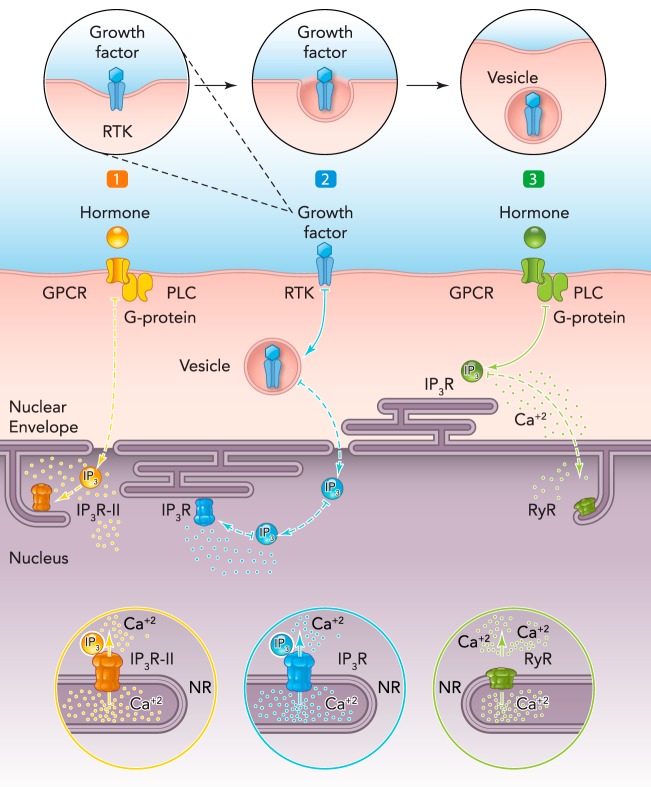Figure 2.
Working hypotheses to trigger nuclear Ca2+
Different pathways to generate nuclear Ca2+ signals have been proposed. In 1 (left), the binding of an agonist to its transmembrane G-protein-coupled receptor (GPCR) produces InsP3 (IP3) in the cytosol. IP3 diffuses to the nucleus and binds to the high-affinity, type II InsP3R (IP3R-II), located along the nucleoplasmic reticulum (NR), to release Ca2+ in the nucleoplasm. In 2 (middle), the binding of a growth factor to a receptor tyrosine kinase (TKR) may result in the translocation of the receptor to the nucleus to generate nuclear IP3. IP3 binds to the IP3R to release Ca2+ in the nucleoplasm. The topology of internalized TRK is not known, and the cartoon shows TKR as being inside the vesicle merely for simplicity. In 3 (right), another putative pathway is initiated following the binding of a hormone to GPCR at the plasma membrane. The IP3 generated within the cytosol can release Ca2+ from the endo-/sarcoplasmic reticulum, and Ca2+ may reach the nucleus to trigger Ca2+-induced Ca2+ release by activating the ryanodine receptor (RyR) in the NR.

